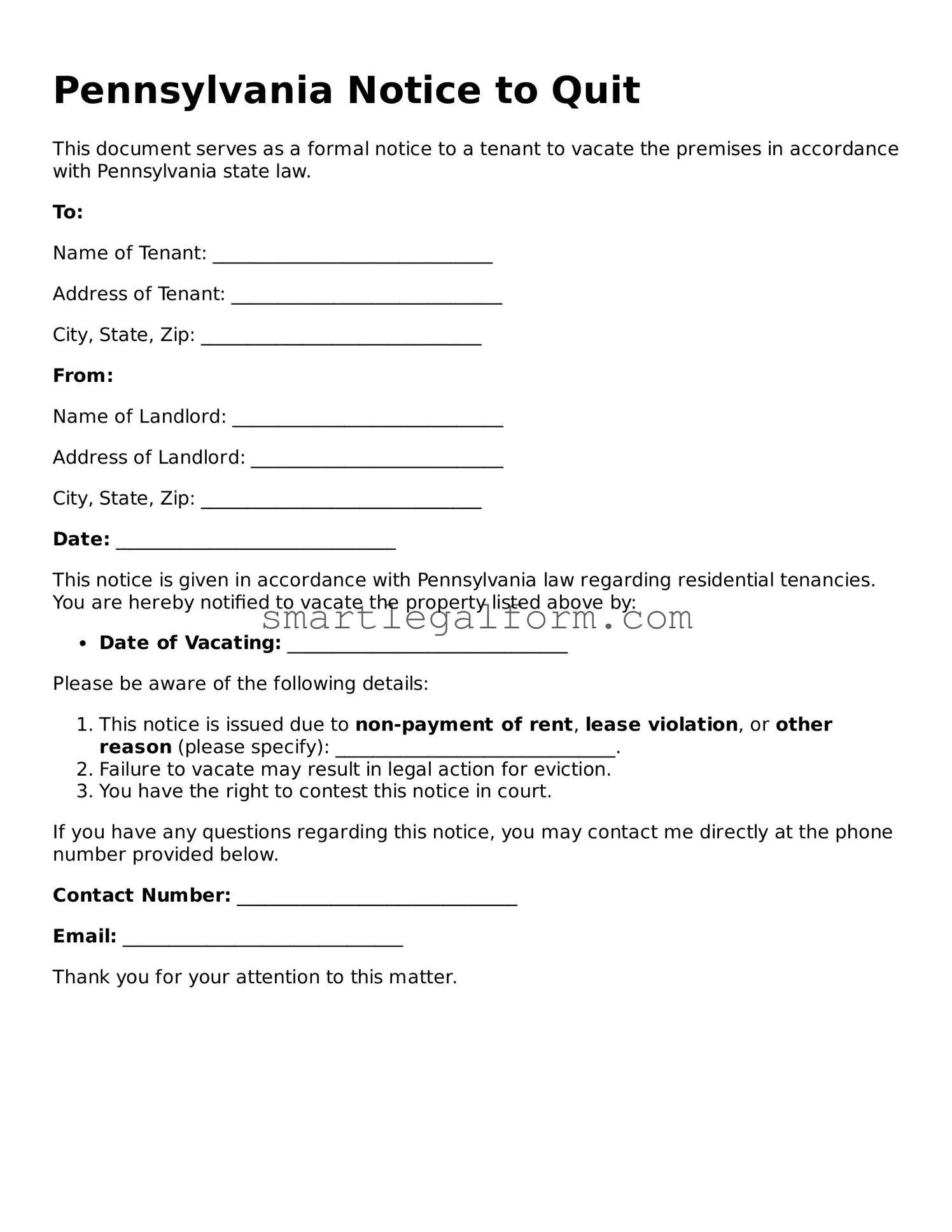Pennsylvania Notice to Quit
This document serves as a formal notice to a tenant to vacate the premises in accordance with Pennsylvania state law.
To:
Name of Tenant: ______________________________
Address of Tenant: _____________________________
City, State, Zip: ______________________________
From:
Name of Landlord: _____________________________
Address of Landlord: ___________________________
City, State, Zip: ______________________________
Date: ______________________________
This notice is given in accordance with Pennsylvania law regarding residential tenancies. You are hereby notified to vacate the property listed above by:
- Date of Vacating: ______________________________
Please be aware of the following details:
- This notice is issued due to non-payment of rent, lease violation, or other reason (please specify): ______________________________.
- Failure to vacate may result in legal action for eviction.
- You have the right to contest this notice in court.
If you have any questions regarding this notice, you may contact me directly at the phone number provided below.
Contact Number: ______________________________
Email: ______________________________
Thank you for your attention to this matter.
